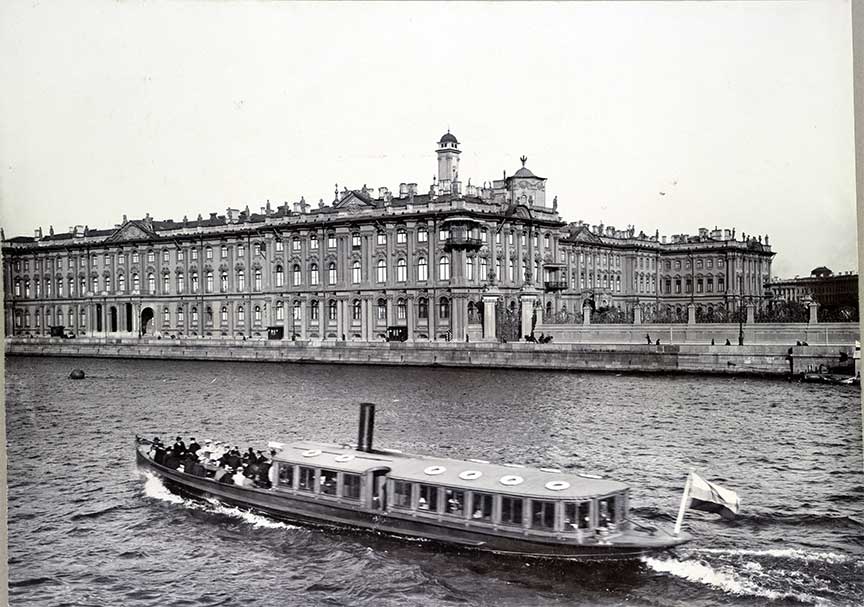1905 Russian Revolt

Winter Palace
On Janary 10, 1905, the First Russian Revolution broke out. Two hundred thousand Russian workers marched on the Winter Palace at St. Petersburg and were fired upon by Czarist troops. Several hundred of the demonstrators were killed. In the ensuing months, demonstrations took place throughout Russia- including a revolt by members of the Russian Navy. Czar Nicholas decreed the establishment of a Duma– an elected parliament– to act as an advisory body to the Czar.
At the end of 1904, a minor event occurred that turned out to be a match that lit the fire of a very inflammable state of affairs. The event; the firing of four workers at Putilov Factory. The workers in the factory went on strike.
This strike took place as news arrived of the Russian surrender to the Japanese at Port Arthur, and event that seriously undermined the authority of the government. The strike by Putilov factory workers spread to other workers.
By January 8, there were 70,000 workers on strike in St Petersburg. There was no electricity, and no newspapers were being printed in the Russian capital.
The strikers and others wanted to present a petition to the Tzar. Father Gapon led them. On January 10, 1905, demonstrators headed to the Winter Palace. The Cossack guards attempted to use their whips to keep the demonstrators away from the palace. The crowd, however, was too large, and the Cossacks moved to using their swords and guns to hold back the crowds. At the same time, the workers at the Putilov factory wanted to join the protestors, but the Cossacks blocked the bridges. The workers would not be denied. In an eyewitness account, a foreign correspondent wrote:
The Cossacks at first used their knouts, then flat of their sabers, and finally, they fired.
The strikers in the front ranks fell on their knees and implored the Cossacks to let them pass, protesting that they had no hostile intentions. They refused, however, to be intimidated by blank cartridges, and orders were given to load with ball.
The passion of the mob broke loose like a bursting dam.
The people, seeing the dead and dying carried away in all directions, the snow on the streets and the pavement soaked with blood, cried aloud for vengeance.
When the fighting for the day ended, it is estimated that 200 lay dead.
The killing of the demonstrators in St Petersburg set off strikes throughout Russia. During a large-scale demonstration in Riga on January 13, troops fired on the demonstrators, killing 70. In Warsaw (which was part of Russia then) on January 14, soldiers fired on demonstrators killing 90. It was clear that Russia was on the verge of a revolution.
The revolution zeal spread beyond the workers, and by April, lawyers and professors who held a meeting in St. Petersburg called for fundamental reform that would lead to a democratic constitution and universal suffrage.
The Tzar, in an attempt to quell the dissent, agreed to an elected State Council called the Duma, but its powers were to be very limited, and it would be elected only by the aristocratic class. This concession seemed only to inflame the protestors further, and in almost all corners of the Russian Empire, demonstrations and strikes were rampant. The Tzar increased the power of the future Duma, but that was not enough to quell the protests. On December 21, a full-scale revolution broke out in Moscow, and railroad stations were seized. Fighting continued until the end of the year, with hundreds killed. At the end of the year, the Tzar managed to somewhat mollify some of the demonstrators by announcing that more Russians could participate in elections to the Duma.
 >
>